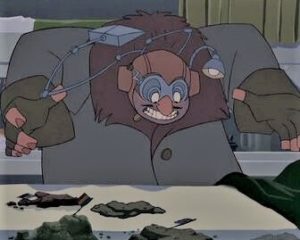Many of you know that I moved to Corvallis in 2012 to study civil engineering at Oregon State University. After graduating from the civil engineering program, I went on to get a Masters in geotechnical engineering. A geo-what now? Civil Engineering is easy enough to understand: they help in construction design. But what does a geotech do? Please see exhibit A:

Mole is concerned about his soil collection.
Mole from Disney’s Atlantis is a classic example of a geotechnical engineer. Namely, we live and breathe soil! But, in all seriousness, geotechs deal with any engineered structure that interacts with soil and rock. The American Society of Civil Engineers describes it this way:
Geotechnical engineering utilizes the discipline of rock and soil mechanics to investigate subsurface and geologic conditions. These investigations are used to design and build foundations, earth structures, and pavement subgrades.
But Haven’t People Been Building on the Earth for Millennia?
Soil is arguably one of the most complex materials used in construction. It requires an understanding of the interaction of three phases: solids, liquids, and gases. Failure to characterize soil well can have devastating consequences for the built structure (think of the Leaning Tower of Pisa or, more recently, the Millennium Tower in SF). Even the Bible teaches us the importance of good foundation material!
A Day in the Life of a Geotechnical Engineer
The company that I worked for in the US specialized in geotechnical drilling services. That means I’ve had a lot of hands on experience studying and investigating soils across the Pacific Northwest. When necessary, we take soil samples back to the home office for further analyses. Once done, we complete a summary report of our findings and recommendations to build safely.

This is a typical day drilling in Oregon. Here we are using what is called a hollow stem auger to take split spoon samples.
We’ve worked on many interesting design projects around Oregon. Some of my favorites types of projects are landslide stabilization and deep foundation designs for coastal projects. One bonus in this field of work is that we get to see a lot of beautiful landscapes. The banner photo shows us cleaning up after a long day drilling in the lovely coastal city of Bandon.

This photo was take from a residential landslide. Landslides sure are scary!
My actual day-to-day tasks will change slightly as I transition to EMI. But, I hope that I will be able to implement some of my expertise in this field on future design projects. I am excited at the prospect of learning many new things at EMI, and using my skills to help build the kingdom of God!
